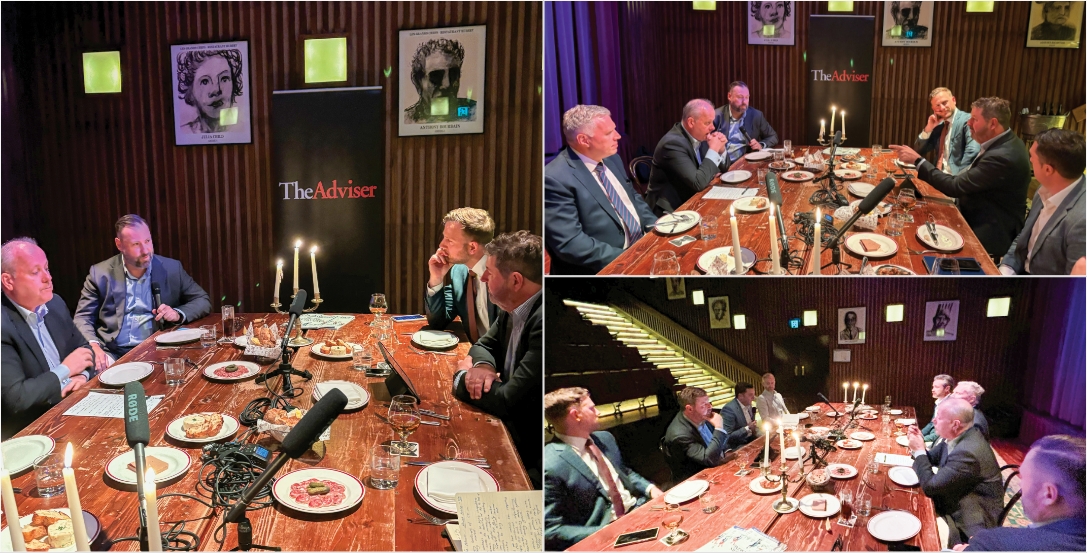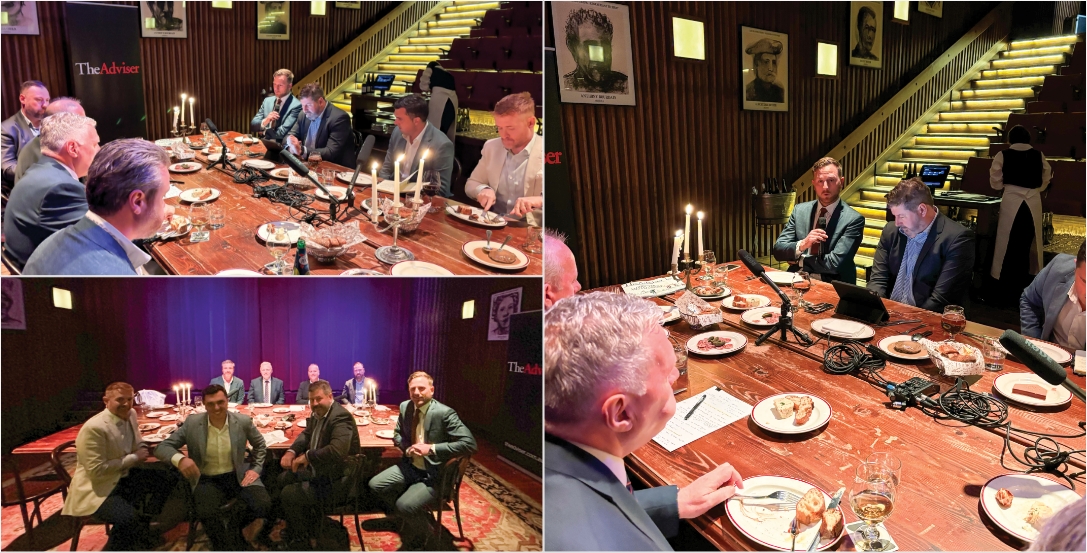The number of mutual banks in Australia has dramatically dwindled in the 21st century, with the total of customer-owned institutions dropping from about 185 in 2004 to around 54 as of March 2024. But while the number of players in the mutual banking sector has been falling, the strength and power of the existing players have been shored up – with a new focus and ferocity coming to the fore.
Of the six customer-owned banks that joined The Adviser for its mutual bank roundtable in September, for example, four had either completed a merger or were pursuing one in the last financial year. Just Teachers Mutual Bank (TMB) and Great Southern Bank were the odds one out (but TMB had acquired Pulse Credit Union in 2021 and GSB has previously said it would “seriously consider” a merger opportunity if one presents itself).
Speaking at the roundtable, Mark Middleton, the head of third-party distribution at Teachers Mutual Bank, said he believed merger activity would continue.
A recent report from S&P Global Tatings has suggested that about 40 mutual banks will disappear in the coming years as consolidation continues to accelerate
“We’ve seen industry consolidation over recent years, and I think there will be continued consolidation over the coming decade,” he said, noting the difficulty that some of the smaller credit unions have been facing with the rising cost of lending and pressures on net interest margins across the board.
In fact, a recent report from credit market research group S&P Global Ratings has suggested that about 40 mutual banks will disappear in the coming years as consolidation continues to accelerate, potentially leaving just 10 mutuals in the field.
This is because it estimates that $20 billion in total assets is emerging as the new scale to be competitive in the Australian retail banking market.
“Mutual customers have become less concerned with any watering down of traditional common bonds and more interested in the pricing benefits and service capability mergers can deliver,” the S&P Global Ratings report, Australian Mutual Lenders: The Magic Number Could Be Less Than 10, states.
This is being driven by “the increasing need for scale in a competitive retail lending and deposit-taking environment” and “the ongoing requirement to invest in technology to keep up with customer expectations and industry trends”, such as digital banking and elevated cyber security.
Speaking at the roundtable, Middleton said: “Personally, I don’t think we’ll go down to 10 mutuals in the near future – but maybe in 10 years that might be the case.”
A cascade of change
So, who are the big players in the market working with brokers at the moment?
The largest customer-owned lender in Australia is now People First Bank, which was created in 2023 through the merger of Heritage Bank (QLD-headquartered) and People’s Choice (SA-headquartered).
The two lenders came together partly to provide “enhanced products, services, digital capabilities and competitive pricing through a growing national footprint, while increasing support for community and environmental initiatives”.
The combined entity now has more than 700,000 members, around $27 billion in assets, over 90 branches (however Heritage and People’s Choice branches are still transitioning to the new brand), and over 1900 employees with joint head offices in Adelaide and Toowoomba.
Speaking at the roundtable discussion, People First Bank’s head of connected channels & partnerships, Michael Sancilio, said: “Our focus has been on bringing together the strengths of both legacy brands to build a new modern, customer-centric banking experience.
“We’re partnering with leading global companies to help deliver a simpler new technology suite and we’ve been able to accelerate the launch of our new brand. This will help give us a really clear proposition in the broker market as a purpose-driven bank that does right by its customers.
“We’ve started transitioning into our new lending operating model, so there’s a lot of work ahead of us, but we want to ensure there’s a consistent experience when dealing with People First Bank. And brokers are a key part of our future,” he said, noting the channel had been important to both former brands and helped deliver the lenders “above-market growth in residential lending”.
Lenders in the eastern states have also been busy marrying businesses.
Victoria-based lender Bank Australia revealed in February that it was exploring a merger with NSW-based lender Qudos Bank in a bid to benefit from economies of scale, reportedly giving members a wider range of products and services (including digital banking technology and increased investment in cyber security and fraud/scam prevention), providing greater investment capability, and creating “Australia’s leading purpose-driven bank” through “increased scale investments in impact for people and the planet”.
Should both boards agree to proceed following the completion of the due diligence, members would be asked to vote on the proposed merger later in 2024 or early 2025 (once all the appropriate regulatory reviews and approvals have been completed).
Once merged, the new entity would have more than 300,000 customers, more than $17 billion of assets, and almost 900 employees.
Matt Wood, national manager – broker at Bank Australia, told The Adviser: “Consolidation is becoming more common across the industry, and is something that we’re in the middle of ourselves with our proposed merger with Qudos Bank.
“If the merger goes ahead, we’ll be a bigger organisation, which provides more scale, more opportunity to invest in even better products, services, and digital banking technology for our customers.”


Ebbs and flows
Darren McLeod, head of third party at SA-headquartered lender Beyond Bank, noted that there had been many mergers in the mutual banking space over the past 10 years, with Beyond Bank itself having been “quite an active player in this space”, having undertaken many successful mergers recently, including two in the past year.
Indeed, Beyond Bank absorbed First Choice Credit Union – a regional NSW credit union – into the Beyond Bank brand at the beginning of the year, and welcomed members and staff from Geelong-based AWA Alliance Bank members to its brand at the end of September.
But, of course, not all merger proposals reach completion. While P&N and Beyond Bank had announced in June 2024 that they had signed a memorandum of understanding to explore a potential merger, it was revealed in mid-September that no such deal would be proceeding.
The merger would have brought together the two customer-owned banks to create a much larger lender (with a combined book of around $20 billion), but after the due diligence process concluded, the P&N board announced that progressing the merger “would not be in the best interests of its members”.
No further details were released on the matter.
But despite this merger not going ahead, P&N did suggest that it remains open to other potential mergers.
In a statement, P&N said it “remains operationally strong and secure in its current state” but said that “size and scale remain important given the ongoing investments required in areas such as cyber security, fraud and financial crime”.
“We will therefore continue to pursue our strategic agenda to grow organically and through mergers while always acting in the best interests of our members,” it said.
Tidal patters
But regardless of the size of the mutual lending landscape, or how many players there may end up being, the common driver uniting all players in this field is to provide a banking experience that gives their members more.
A recent report from S&P Global Tatings has suggested that about 40 mutual banks will disappear in the coming years as consolidation continues to accelerate
Customer-owned institutions have always been focused on delivering results for their communities, but the trend emerging now seems to be a united front on not only making banking better but leaving the world a better place, too.
Several mutual banks are now B-Corp certified, meaning they are meeting the highest standards of verified social and environmental performance, public transparency, and legal accountability to balance profit and purpose.
Beyond Bank’s Darren McLeod said: “The B-Corp movement continues to grow worldwide, and as Australia’s first certified B-Corp bank, we think it is fantastic to see so many others join the movement.
“Close to 10 mutual organisations are now certified, so I think that’s a real edge that we’ve all got.”
Gateway Bank’s chief operating officer, Zeb Drummond, agreed, adding: “We live it every day at Gateway. From top to bottom, we’ve reduced our carbon footprint with staff-wide initiatives incorporating the reduce, reuse, recycle principles and those initiatives now are coming to maturity.
“It’s also starting to resonate with our member base as well; we’re seeing more return customers as a result of them being aligned to our Pocket and Planet purpose. We’ve won hearts and minds.”
Others, such as Bank Australia, are choosing carefully how they invest member money.
Bank Australia’s Matt Wood elaborated: “Our purpose is to empower customers to use their money to create a world where people and the planet thrive. As part of our responsible banking policy, we don’t invest in areas like the gambling industry, fossil fuels and live animal exports.
“We’re a certified B Corp and that reinforces what we stand for and brokers like that. They like the fact that we’re customer owned and we do stand for something and we actually live it.”
Going green
Several commentators added that they believed green lending would continue to grow in importance to Australian borrowers, with mutuals leading the way in this space.
Drummond said: “Our whole proposition around Pocket and Planet and niche is absolutely critical … we still feel that there’s an unsatisfied niche – and opportunities in the market – with an ESG lens.
“What we’re seeing now is this segment starting to wake up a little bit more. The average consumer is more aware now of the green space and environmental, social, and governance (ESG) and some of the benefits you gain from aligning some of those as well.
“Green is our space – we recently tipped over 5.9 per cent of our portfolio in green loans. So it’s clear that’s where we add value. For environmentally conscious and cost-sensitive customers, we’re absolutely the bank for them. It’s factoring into customer buying decisions more than ever before.”
TMB’s Mark Middleton said more brokers were also more attuned to working with organisations that have a strong ESG backbone, stating: “We’re also seeing more brokers who are predominantly just dealing in the green lending space, so they’re looking for lenders to align to that sustainability focus.
“They’re referring to us because the customers are walking in the door who are looking for that and want a better place for their kids and their grandchildren, their great-grandchildren. Rather than supporting other financial institutions who might not have as strong of an ESG focus, they’re taking the opportunity to change lending institutions.”
“Clearly, the mutual sector wants to make the world a better place for the long term, so I think that’s where brokers play a role in helping customers who are chasing that, find us.”
Great Southern Bank’s Mat Patterson revealed that the lender was also expanding its green footprint (see page 24 for more) and concluded by saying mutual lenders would continue to rely heavily on, and invest in, the broker channel to help them grow.
Speaking at the roundtable, he noted that around 80 per cent of Great Southern Bank’s flows come through the broker channel.
“The dependency on brokers is not going to stop anytime soon,” he said.
“For us to try and swim against the tide and try and grow our organic book to be 50 per cent would be really hard for us to do – and quite expensive, as well.
“From a focal point, third party, is it. We run a small business and 80 per cent of our flow comes from brokers so, without it, we don’t have much.
“We support customers’ choice for how they get financial help and will work closely with brokers as they are our representation of the market. It’s absolutely about the greater alignment to our purpose and our key stakeholders in third party.
“It’s doing the right thing for our membership and for the brokers, always,” Patterson concluded.



